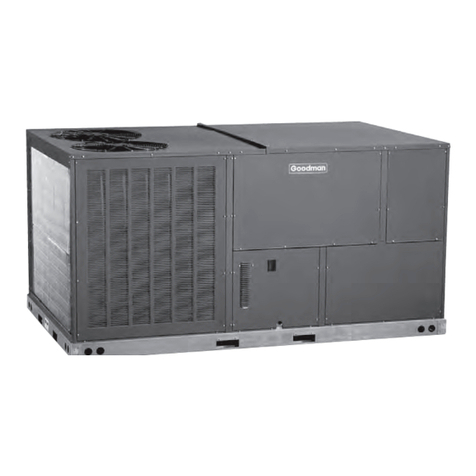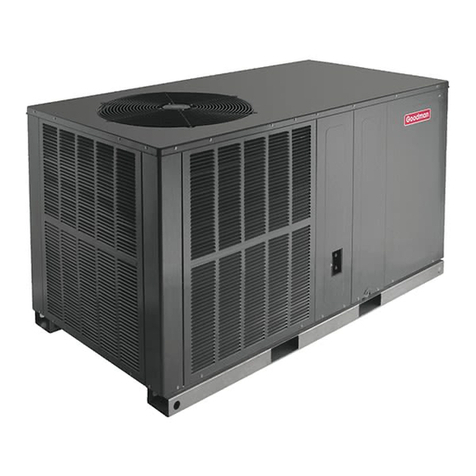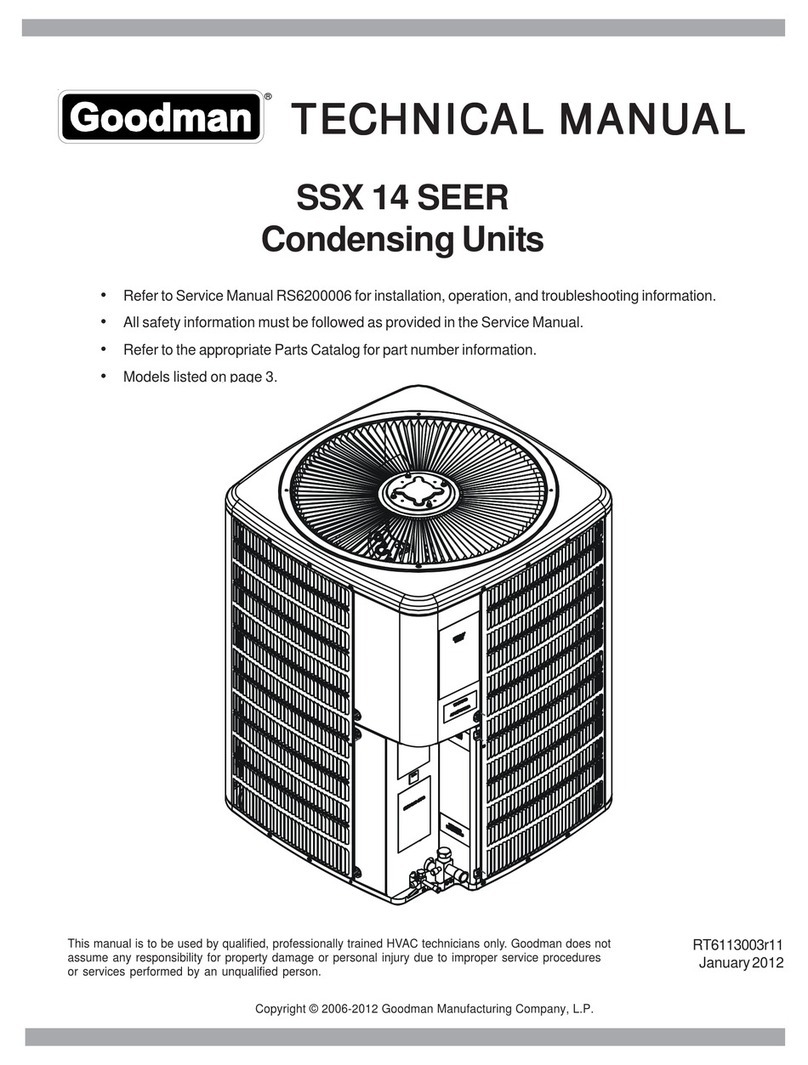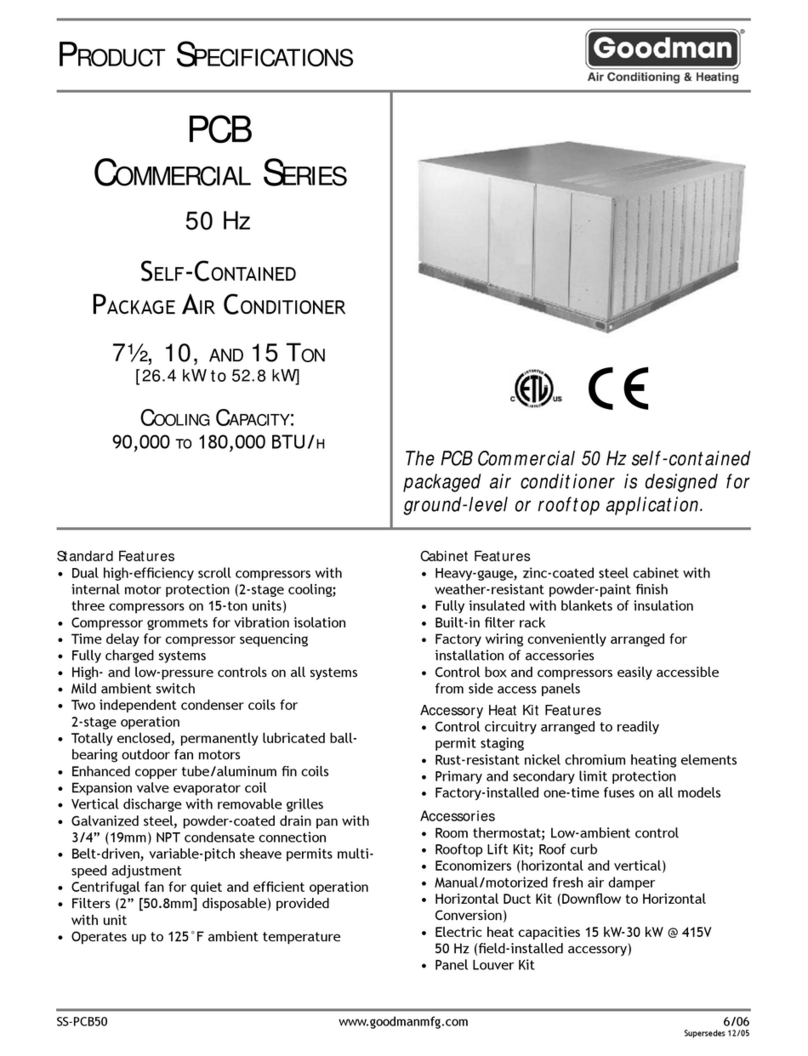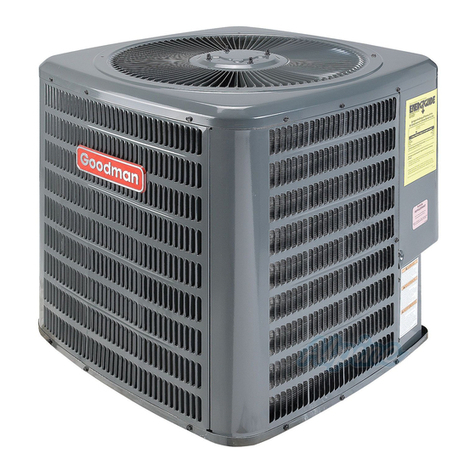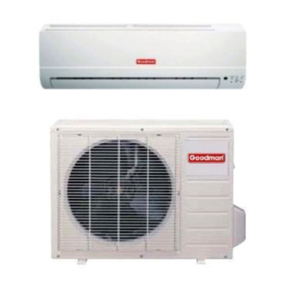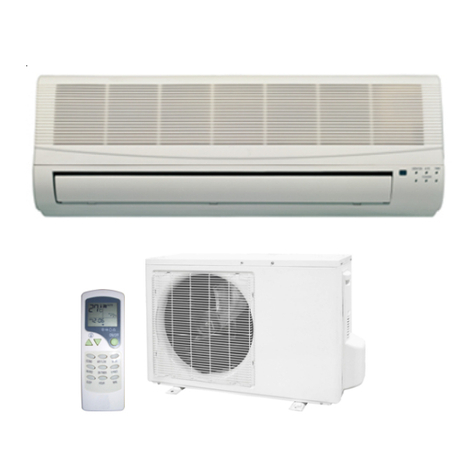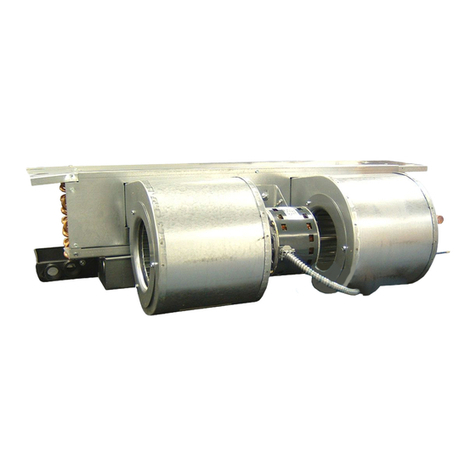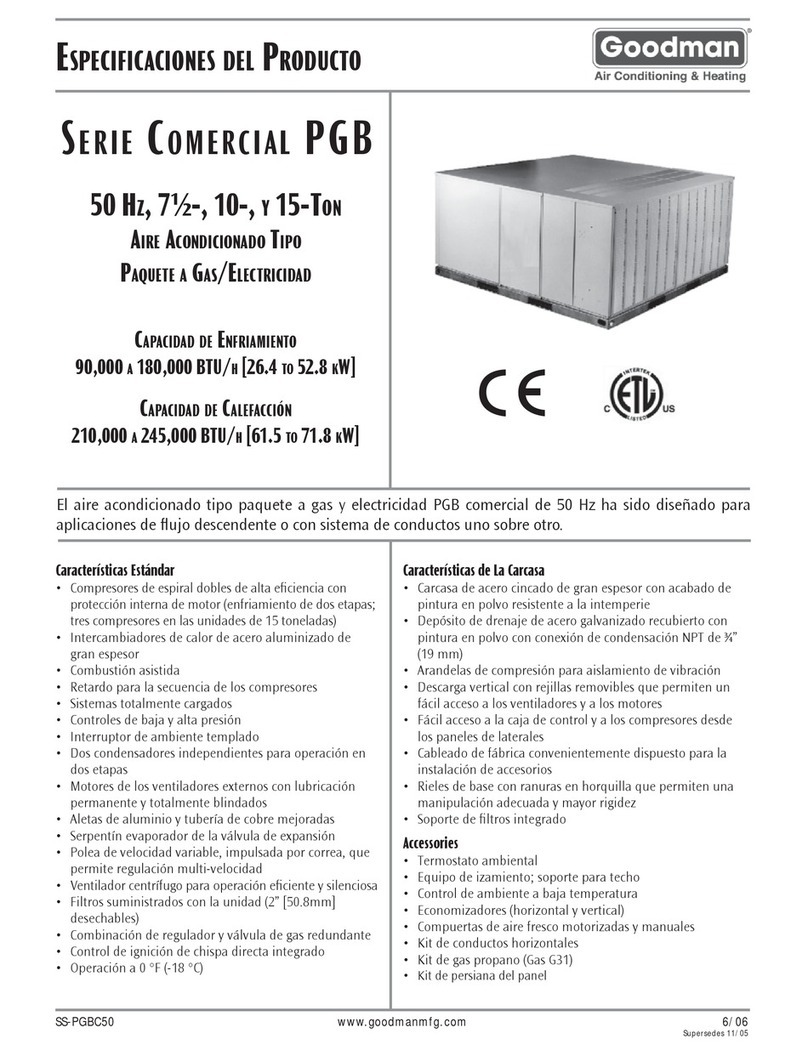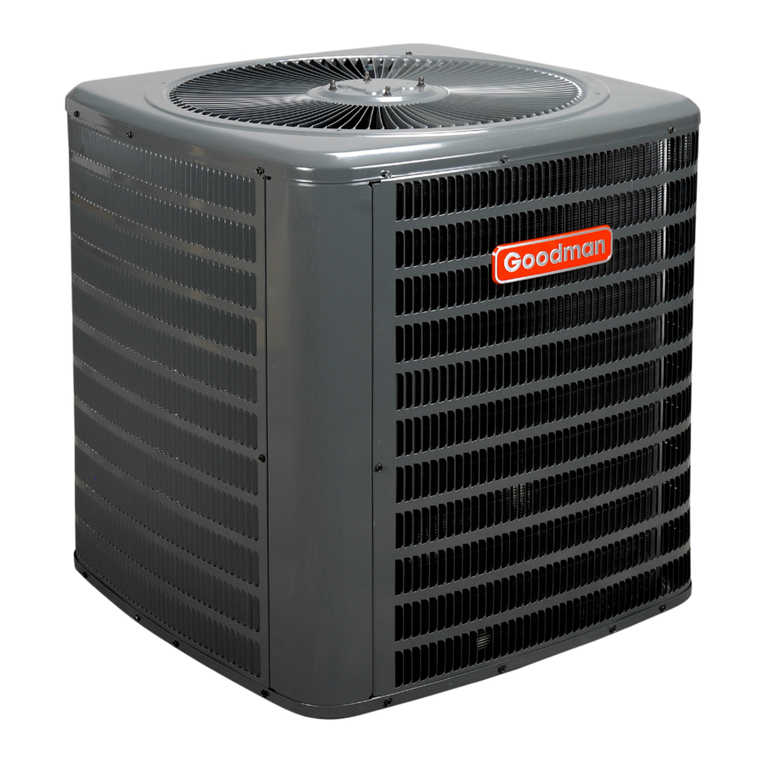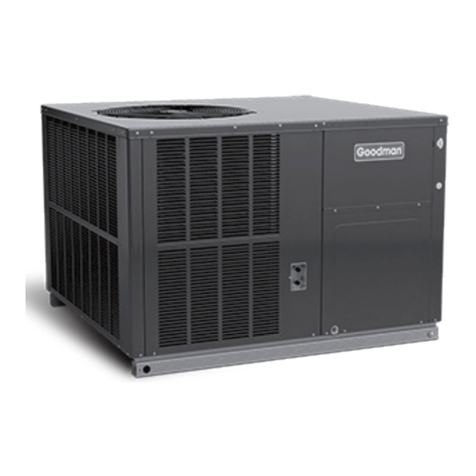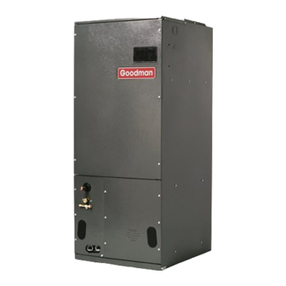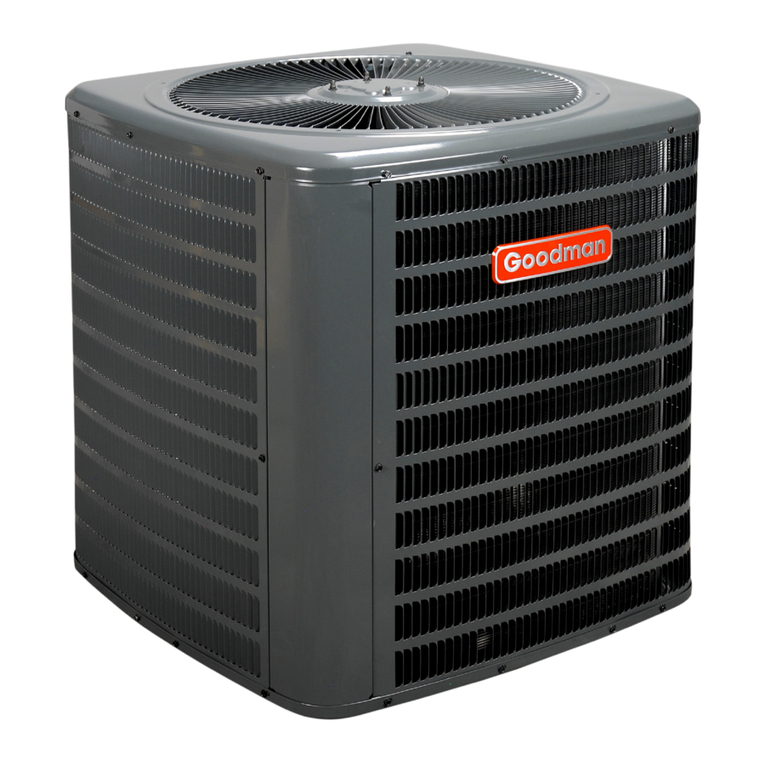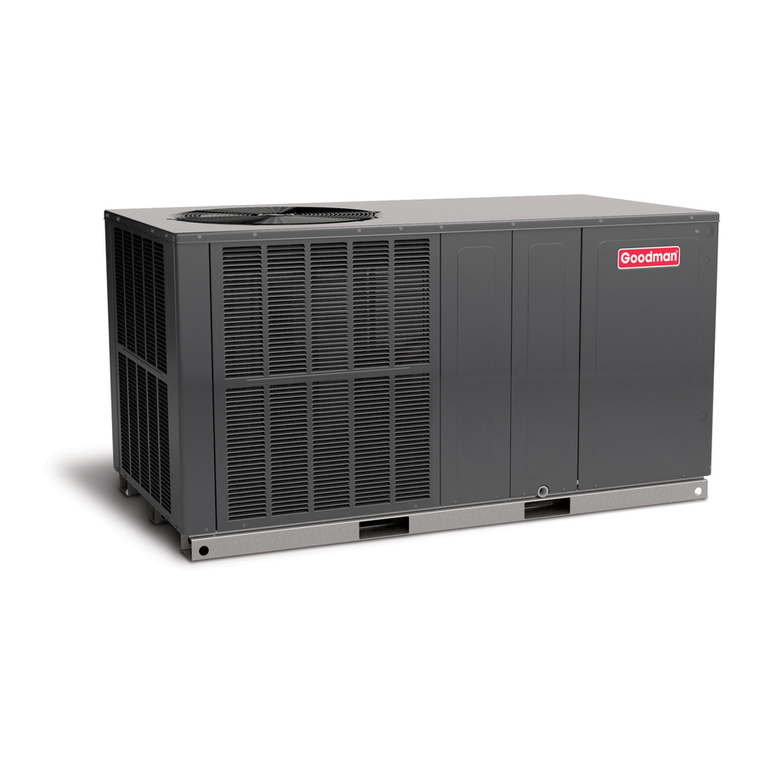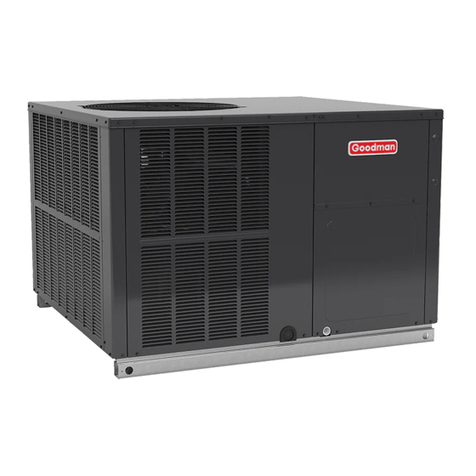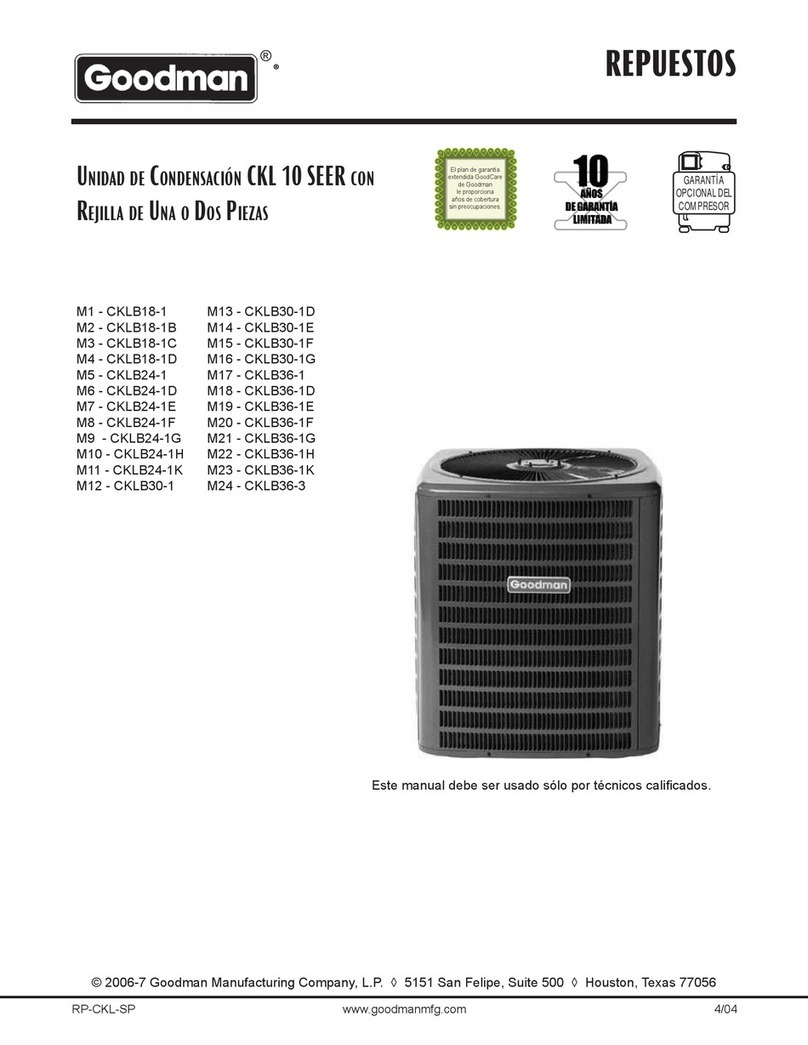
4
Insulationis necessarytoprevent condensationfrom forming
and dropping from the suction line. Armflex (or satisfactory
equivalent) with 3/8” min. wall thickness is recommended. In
severeconditions (hot, highhumidityareas)1/2”insulationmay
be required. Insulation must be installed in a manner which
protectstubing from damageandcontamination.
Where possible, drain as much residual compressor oil from
existing systems, lines, and traps; pay close attention to low
areas where oil may collect. NOTE: If changing refrigerant
types, ensure the indoor coil and metering device is compat-
ible with the type of refrigerant being used; otherwise, the in-
door coil must be replaced.
Burying Refrigerant Lines
Ifburyingrefrigerantlinescannotbeavoided,usethefollowing
checklist.
1. Insulate liquid and suction lines separately.
2. Enclose all underground portions of the refrigerant lines
inwaterproof material(conduit orpipe) sealingthe ends
wheretubing enters/exitstheenclosure.
3. If the lines must pass under or through a concrete slab,
ensurelines are adequatelyprotected and sealed.
Refrigerant Line Connections
NOTICE
THIS UNIT IS SHIPPED WITH A NITROGEN/HELIUM
HOLDING CHARGE ONLY. UNIT MUST BE EVACUATED
AND CHARGED PER INSTALLATION INSTRUCTIONS
WITH REFRIGERANT LISTED ON SERIAL RATING PLATE.
NOTICE
UNITS SHIPPED WITH A HOLDING CHARGE ARE
INTENDED FOR COMPONENT REPLACEMENT ONLY ON
EXISTING SYSTEMS, AND NOT INTENDED FOR USE IN
NEW SYSTEMS OR NEWLY CONSTRUCTED HOMES.
NOTICE
UNITS MUST ONLY BE USED AS REPLACEMENT
COMPONENTS FOR PRE-2010 INSTALLED SYSTEMS.
NOTE:Holdingchargemustberemovedbeforebrazing. Open
servicevalvesslowly toremoveholdingcharge. Close valves
beforebrazingto preventcontaminants fromenteringsystem.
IMPORTANT
Toavoidoverheatingtheservicevalve,TXVvalve,orfilter
drierwhilebrazing,wrapthecomponent with awet rag, or
use a thermal heat trap compound. Be sure to follow the
manufacturer’s instruction when using the heat trap
compound.Note: RemoveSchradervalves fromservice
valves before brazing tubes to the valves. Use a brazing
alloy of 2% minimum silver content. Do not use flux.
Torch heat required to braze tubes of various sizes is
proportionalto the sizeof thetube.Tubes ofsmallersize
requirelessheat tobringthetube tobrazingtemperature
before adding brazing alloy. Applying too much heat to
any tube can melt the tube. Service personnel must use
the appropriate heat level for the size of the tube being
brazed. Note: The use of a heat shield when brazing is
recommendedtoavoidburningtheserialplateor thefinish
on the unit.
1. Theends oftherefrigerant linesmust be cutsquare, de-
burred,cleaned,andberoundandfreefromnicksordents.
Anyothercondition increases thechanceof a refrigerant
leak.
2. “Sweep”therefrigerantlinewithnitrogenorinert gas dur-
ing brazing to prevent the formation of copper-oxide in-
side the refrigerant lines. This may cause a blockage or
failureofthe metering device.
3. After brazing, quench the joints with water or a wet cloth
topreventoverheatingofthe service valve.
4. Ensurethe filter drierpaintfinish is intactafterbrazing. If
thepaintofthesteelfilterdrierhasbeenburnedorchipped,
repaintortreatwitha rust preventative. Thisis especially
important on suction line filter driers which are continu-
ally wet when the unit is operating.
NOTE: Becareful not tokinkor dentrefrigerantlines. Kinked
or dented lines will cause poor performance or compressor
damage.
Do NOT make final refrigerant line connection until plugs are
removedfrom refrigerant tubing.
NOTE: Before brazing, verify indoor piston size by checking
the piston kit chart packaged with indoor unit.
Leak Testing (Nitrogen or Nitrogen-Traced)
To avoid the risk of fire or explosion, never use
oxygen, high pressure air or flammable gases for leak
testing of a refrigeration system.
WARNING
To avoid possible explosion, the line from the
nitrogen cylinder must include a pressure regulator
and a pressure relief valve. The pressure relief valve
must be set to open at no more than 150 psig.
WARNING
